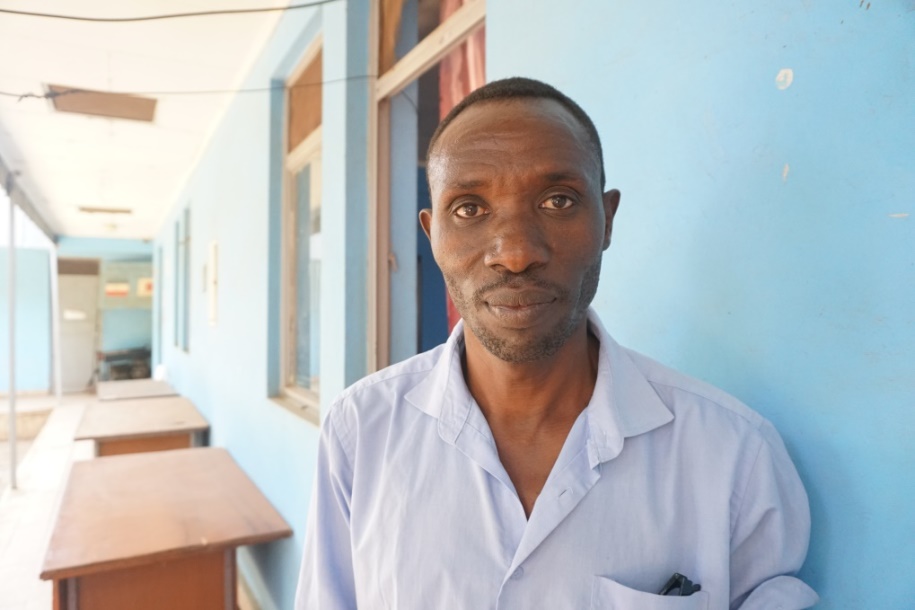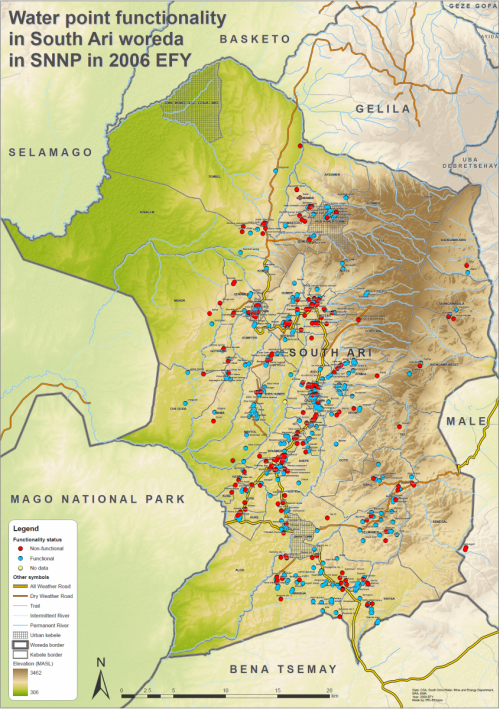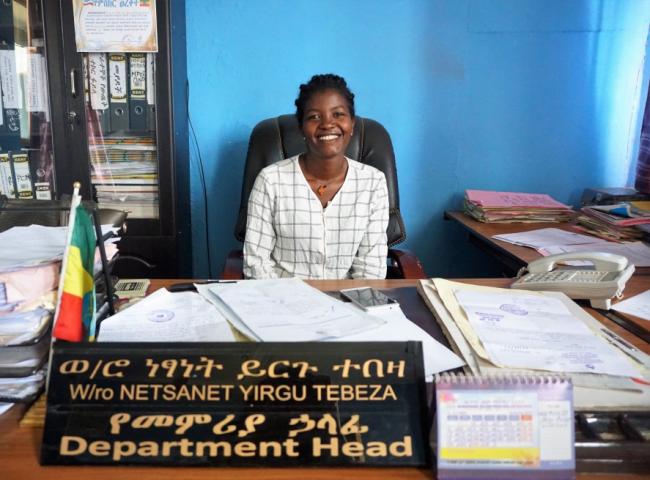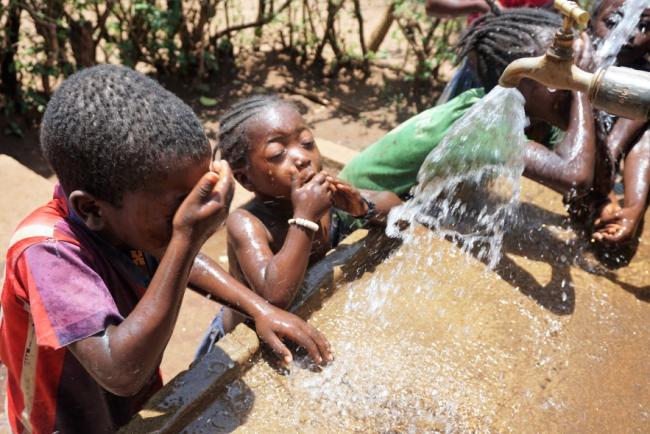Asset inventory is essential in Ethiopia to develop more realistic planning to increase functionality as well as coverage.
Published on: 16/03/2017
“We all have to stop being system’s blind”, said IRC CEO Patrick Moriarty at his TEDx Talk. It’s good to have ambitious plans to reach the Sustainable Development Goals, but it can be demoralising to have targets that are impossible to reach. When governments and non-governmental organisations (NGOs) have limited and usually not very flexible resources, what does this actually mean? Where do we start?
The 5 year water targets for the zone of South Omo can be summarised as follows:
Asrat Abebe is the head of the Woreda Water, Mine and Energy Office of the most populated district in the area, South Ari, with 260,000 people in the rural and urban areas. He has shared the challenging budget and coverage data:
By doing some back-of-the-envelope calculations it is clear that these budgets are far from what is needed to achieve the ambitious targets. Without ongoing monitoring and support, communities and the district technical teams cannot reduce non-functionality, but with only one motorcycle there is no way all these 260,000 people can be supported. In this very challenging situation where can we start to deliver change? How to support the zone and the district (woreda) to achieve their targets? How do we make the necessary changes in the system?
"There is no definition of what is considered low or medium maintenance and where the responsibility of the communities for maintenance ends. The zone and the district know their (larger) maintenance responsibilities, but there is no budget allocation. We rely on NGOs to support us on ad-hoc maintenance. We are prioritising investments for those that have no water sources", says Omo Guderso, coordinator Rural Water Schemes Construction, South Ari.

The existing asset inventories are focusing exclusively on the infrastructure and if it's functional or not. They provide data useful for upward reporting on functionality but not enough for local asset management to improve functionality or service levels.
The first step is therefore to do a more detailed and useful asset inventory. The asset inventory consists of a survey to inventorise all the water points, its functionality, reasons for non-functionality and the service levels it is delivering: access, quantity of water, reliability, and water quality. Read more about the indicators in this paper.
Because we don't want the asset inventory to give us only a snapshot of the status of the infrastructure now, but we want to use it to plan and budget for asset management, it's important to capture the age and the overall status of the different components of the infrastructure: the mains, the distribution network, the tap stands, the spring protection, etc. It's also relevant to capture how much households are contributing to the maintenance of the water points. You can find a general Excel-based asset inventory with projections for maintenance needed based on age and status in the IRC costing and budgeting tools.
In South Omo, Ethiopia we have adapted the asset inventory to reflect the infrastructure and government standards for service levels. In the South Ari woreda (equivalent to a district) we will track an estimated 520 water points and water schemes, conduct water quality tests on 20% of these and triangulate all the information with water committees and water users. We have made four separate mobile surveys supported by Akvo Flow. The data will be visualised in a dashboard and in a map as it comes in, allowing the team to clean it as much as possible while data collection is taking place.

The asset inventory will help us to develop more realistic planning to increase functionality while also increasing coverage. With a map showing the data and reasons for non-functionality, government and local development partners can join efforts and start prioritising, planning and budgeting for maintenance of existing assets. With time, preventive maintenance (instead of fix on failure) can be planned too. "Data on the status of our assets can also be used as advocacy towards local and regional councils for allocating a higher share of the budget to the water sector. This would not be sufficient but would be part of the solution to reach the targets" says Netsanet Yirgu Tebeza, head of the regional Water, Mine and Energy Bureau, South Omo, Ethiopia.

We are looking forward to work with staff from the zone, the woreda and NGOs to support the ambitious targets of South Omo. We all expect next year, around this time, to see a change in budget allocations and more happy healthy children.

Acknowledgements: This work is being done with the support from USAID Sustainable WASH Systems Initiative and the USAID Lowland WASH Activity in Ethiopia. Thanks also to colleagues Asmelash Kebede (AECOM), Desta Dimtse (IRC Ethiopia) and Tereza Nega (IRC Ethiopia).
At IRC we have strong opinions and we value honest and frank discussion, so you won't be surprised to hear that not all the opinions on this site represent our official policy.